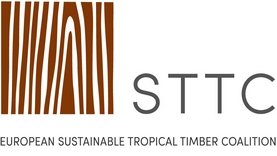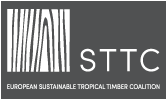Certification schemes lay out EUDR compliance support
The FSC webinars and recordings which are available on its website, covered its FSC EUDR Aligned Standard, which will be launched in June this year as an added option for all FSC-certified companies. Within this, its EUDR Regulatory Module will provide added components on avoiding implications in deforestation and forest degradation and take companies through EUDR alignment of due diligence processes and reports.
FSC has also been explaining how its new FSC Blockchain platform will work. This is designed to enable certified companies, including operator first placers, large traders, and exporters from the EU, to meet the EUDR’s demand for geolocation coordinates for the origin of timber and wood products. The platform will enable businesses to transmit product origin and harvest data throughout the supply chain. Confidentiality of sourcing information is key, says the FSC, and only those who upload data to the system will be able to say who can access it. Competent authorities are also kept informed on how it will operate and help generate due diligence statements for submission to the EU.
Ahead of the EU benchmarking supplier countries under the EUDR as low, standard, or high risk of commodity production being linked to deforestation and forest degradation, FSC is additionally revising 20 of its 60 country risk assessments, looking at risks of illegality and unsustainable practice. Its new Risk Assessment Framework will be unveiled in June, with the 20 revised national assessments available by January 2025.
The PEFC ran a webinar ‘On the path to EUDR alignment’ on February 27 giving the latest on the development of its sustainable forest management and chain of custody standards to help certified companies satisfy the regulation. A PEFC Sustainable Forest Management Working Group has worked on ‘identifying and validating gaps between its sustainable forest management standard and EUDR requirements’. The COC standard is out for consultation until May 7th. The SFM benchmark standard is due to go out to consultation in May, for 60 days.
The organisation is developing an EUDR-adapted due diligence system (DDS) too, to enable companies to implement the regulation. This will be compatible with the existing PEFC DDS in its chain of custody standard. The new system, says PEFC, will actually go further than EUDR requirements by also covering its controversial sources definition.
By implementing the PEFC EUDR Module alongside the PEFC SFM and Chain of Custody Standards, it says operators will ensure they are undertaking due diligence in line with the EUDR’s requirements, including on risk assessment and definitions of controversial sources and deforestation.
The organisation is also focusing on the EUDR’s demand for timber geolocation data from forests used for timber products. “Certified organisations and PEFC members can expect guidance on how best to approach EUDR compliance data issues, including, where appropriate, suggested standardised methods for obtaining, storing, and presenting necessary data,” it states.
PEFC are looking to collaborate with commercial software providers to allow owners/managers to upload geolocation coordinates into the software company EUDR solutions. Operators will have the responsibility to upload Due Diligence statements and geolocation data to the EU Information centre where they will receive a reference number. DDS information, geolocation data and EU reference numbers will be able to be shared appropriately using commercial software company solutions. PEFC will release details of partnerships in due course.
The FSC has also revised its deforestation/forest land conversion cut-off date, after which they cannot be certified, to the end of 2020 to match the EUDR. The FSC proviso is that forest restitution and restoration has taken place between its earlier 1994 cut-off point and the new date. Concerning the issue of any change to the PEFC’s conversion cut-off point (which is currently 2010) and restoration, this would be up to its Working Group to decide. FSC and PEFC stress that their certification schemes will not give businesses a ‘green lane’ through the EUDR. It will be the responsibility of individual certified companies to undertake the requisite due diligence. But they say the adaptation of their systems and standards to EUDR requirements will go a long way in aiding and providing guidance on compliance.













